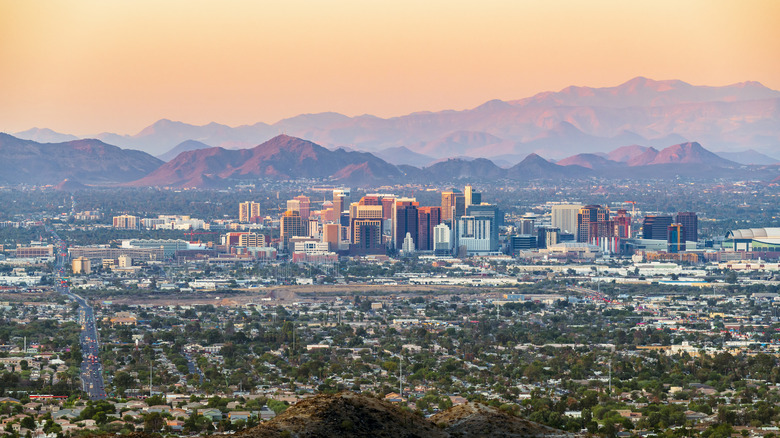This Arizona City Can Expect Weather Events Leading To 'Thousands Of Deaths', Per Climate Scientists
The desert state of Arizona has always been hot and dry, but climate change over the last decade has led to even more frequent episodes of dangerously high temperatures. Heatwaves that were once unexpected, once-in-a-lifetime phenomena have become regular, annual events. In the face of rising temperatures, Arizona's authorities were left struggling to safeguard citizens from heat-related deaths and illnesses. Phoenix, in particular, has been reeling under the onslaught of consecutive heatwaves. It has experienced hundreds of heat-related deaths in the last few years — 2023 topped the list with a whopping 645 heat-related deaths in Maricopa County. During this year, Phoenix experienced 31 consecutive days when temperatures exceeded 110 degrees Fahrenheit.
"The [heat] surges were so intense and long, we really did approach it like a mass casualty event," said Jeffrey Johnson, Chief Medical Examiner of Maricopa County, to NBC News. As of writing this article, the Maricopa Heat Surveillance Dashboard has already shown 293 suspected heat-related deaths in 2025. Some forecasts show that heat-related problems like drought and wildfires could lead to thousands more deaths in the coming years.
But why is Phoenix so hot, even compared to the rest of the state? The answer to that lies in the phenomenon known as the urban heat island effect, in which parts of a city may have higher temperatures thanks to greater concentrations of buildings, concrete surfaces, and vehicle emissions. Areas with more vegetation, water, or fewer buildings can be as much as 15 to 20 degrees cooler than these more built-up areas. The heat island effect also results in nighttime temperatures being higher than expected in a desert environment, providing no relief from the harsh daytime weather.
Staying cool amidst rising temperatures in Phoenix
Phoenix's increasing temperatures have already affected Arizona's tourism industry, one of the state's major economic sectors. In 2023, we saw how weather phenomena like heat domes can affect air travel and contribute to record-breaking temperatures. But Maricopa County officials are rolling out measures to combat the extreme heat, and they contributed to a reduction in heat-related deaths last year. According to Maricopa County Public Health Chief Medical Officer Dr. Nick Staab, one of the most effective measures has been the establishment of Heat Relief Centers, in which community spaces like churches and community centers are turned into free cooling and hydration stations for anyone without access to indoor air conditioning.
This new normal also means you'll need to adjust any planned vacation activities to account for higher temperatures. Try to plan trips to Phoenix or its surrounding areas during the winter months, when temperatures aren't as high. Officials also warn people to stay inside during the warmer hours of the day and consider exploring indoor attractions, like museums and cultural centers. If you really want to step outside during the summer, ditch Phoenix's desert hiking trails and instead head over to the neighboring city of Scottsdale for scenic walking paths along gorgeous canals and a hidden waterfall. Staying in shaded, tree-covered areas or near water will keep you cooler than the more urban or open parts of the city. Carry a water bottle and an umbrella or hat to protect yourself from heat stroke. There's always plenty to enjoy in Phoenix, even with increasing temperatures limiting your activities.

